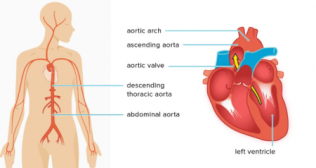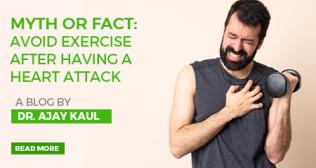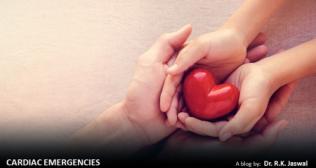
Utilizing Isometric Exercise for Blood Pressure Control
When anyone thinks about exercise, sweating through a cycling class, adding miles from a brisk walk/pumping iron in the weight room may strike one's mind. But there's a distinct form of exercise that utilizes something besides movement to give an individual a workout. It's an isometric exercise which is gaining popularity for its role in helping lower and control people's blood pressure.
What is isometric exercise?
Isometric exercise targets tightening/contracting a specific muscle or group of muscles. The targeted muscles don't noticeably alter in length, and the joints involved don't move. The exercise is performed in a static position and relies on the person's body weight to aid maintain strength and stabilize his/her joints and core.
Because isometric exercise doesn't involve movement/full range of motion and targets muscles, it can enhance strength and stability for people recovering from an injury or those suffering from arthritis.
One misconception regarding isometric exercise is that it involves straining and holding one's breath, which can elevate a person's blood pressure. To hold an isometric or static exercise, a person needs to concentrate slowly breathing in and out.
New research has shown that isometric exercise can be an effective mode for preventing or lowering elevated blood pressure.
Why is blood pressure significant?
Elevated blood pressure is dangerous because it makes the heart work harder and less efficiently. For a prompt review of blood pressure, there are two main numbers when measuring a person’s blood pressure: systolic as well as diastolic.
The Centers for Disease Control and Prevention, in simple terms, explain these:
Systolic blood pressure
Estimates the maximum pressure in the arteries as the heart contracts and relaxes.
Diastolic blood pressure
Estimates the arterial pressure when the heart rests between beats.
Healthy blood pressure is lower than the value - 120/80 mm Hg.
What are the novel research findings regarding exercise and blood pressure?
Researchers examined the recommendations for exercise to aid lessen blood pressure, which relied on older research that emphasized aerobic/ cardio exercises like cycling/running. The study also looked at the impacts on blood pressure from doing high-intensity interval training, (or HIIT), as well as isometric exercise.
The authors in simple terms defined healthy resting blood pressure as below the value 130/85 mm Hg and elevated blood pressure as 140/90 mm Hg.
The new study findings were that isometric exercise led to the most crucial reductions in systolic as well as diastolic blood pressure.
How can someone build isometric exercise into his/her workout?
Isometric exercise is an excellent addition to an individual's cardiovascular and strength training routines.
Wall sits as well as planks are two of the excellent isometric exercises for lowering blood pressure. Here's how to do them:
Wall sit
One should stand with his/her back toward a wall. Step out approximately 2 feet from the wall. Place his/her feet firmly on the ground and shoulder-width apart. Slide his/her back down the wall while keeping his/her abdominal muscles tight and bending his/her legs until they're at a right angle. It's equivalent to sitting in a chair without the chair. Person should analyze that his/her knees are straight above their ankles.
This exercise focuses on a person’s glutes/buttock, muscles as well as quadriceps, or thigh, muscles, as well as his/her abdominal or core muscles.
Planks
Wall plank
Person should Stand facing a wall. Place his/her elbows as well as forearms on the wall. Take a step back, tuck in his/her bottom, and tighten their abdominal muscles by pulling your belly button into your spine. Hold for 20 seconds.
Floor plank on knees
A person should lie on his/her stomach and prop themselves up slightly on his/her forearms. Utilising his/her knees and forearms, a person lifts his/her hips off the floor to about the same height as their shoulders. Hold this position, focusing on utilizing his/her core muscles, for 20 seconds. To progress to a harder version, press their toes into the floor, then lift their knees off the floor and squeeze his/her glutes and core to create a plank which involves full-body tension. One should think about pulling their belly button into their spine.
Planks focus on a person's back, shoulders as well as abdominal muscles.
With both exercises:
One should Remember to breathe slowly and regularly to give his/her muscles the oxygen they need.
One should commence by holding the position for 20 seconds and work his/her way up to holding the position for 120 seconds. One should strive to do four sets, with a few minutes between each set, three times in seven days.
In a nutshell, incorporating isometric exercises such as planks and wall squats into your fitness routine can be highly beneficial for managing as well as reducing blood pressure. Unlike conventional aerobic exercises, isometric exercises should focus on static muscle contractions without joint movement, making them accessible to an array of individuals.
To integrate isometric exercises into your workout routine effectively, start gradually and focus on proper form and breathing techniques. Commence with shorter durations and progressively increase the time held and number of sets. Aim for consistency, performing these exercises at least three times a week to maximize their blood pressure-lowering benefits.
Popular Searches :
Hospitals: Cancer Hospital in Delhi | Best Heart Hospital in Delhi | Hospital in Amritsar | Hospital in Ludhiana | Hospitals in Mohali | Hospital in Faridabad | Hospitals in Gurgaon | Best Hospital in Jaipur | Hospitals in Greater Noida | Hospitals in Noida | Best Kidney Hospital in Kolkata | Best Hospital in Kolkata | Hospitals in Rajajinagar Bangalore | Hospitals in Richmond Road Bangalore | Hospitals in Nagarbhavi Bangalore | Hospital in Kalyan West | Hospitals in Mulund | Best Hospital in India | | Cardiology Hospital in India | Best Cancer Hospital in India | Best Cardiology Hospital in India | Best Oncology Hospital In India | Best Cancer Hospital in Delhi | Best Liver Transplant Hospital in India
Doctors: Dr. Rana Patir | Dr. Rajesh Benny | Dr. Rahul Bhargava | Dr. Jayant Arora | Dr. Anoop Misra | Dr. Manu Tiwari | Dr. Praveer Agarwal | Dr. Arup Ratan Dutta | Dr. Meenakshi Ahuja | Dr. Anoop Jhurani | Dr. Shivaji Basu | Dr. Subhash Jangid | Dr. Atul Mathur | Dr. Gurinder Bedi | Dr. Monika Wadhawan | Dr. Debasis Datta | Dr. Shrinivas Narayan | Dr. Praveen Gupta | Dr. Nitin Jha | Dr. Raghu Nagaraj | Dr. Ashok Seth | Dr. Sandeep Vaishya | Dr. Atul Mishra | Dr. Z S Meharwal | Dr. Ajay Bhalla | Dr. Atul Kumar Mittal | Dr. Arvind Kumar Khurana | Dr. Narayan Hulse | Dr. Samir Parikh | Dr. Amit Javed | Dr. Narayan Banerjee | Dr. Bimlesh Dhar Pandey | Dr. Arghya Chattopadhyay | Dr. G.R. Vijay Kumar | Dr Ashok Gupta | Dr. Gourdas Choudhuri | Dr. Sushrut Singh | Dr. N.C. Krishnamani | Dr. Atampreet Singh | Dr. Vivek Jawali | Dr. Sanjeev Gulati | Dr. Amite Pankaj Aggarwal | Dr. Ajay Kaul | Dr. Sunita Varma | Dr. Manoj Kumar Goel | Dr. R Muralidharan | Dr. Sushmita Roychowdhury | Dr. T.S. MAHANT | Dr. UDIPTA RAY | Dr. Aparna Jaswal | Dr. Ravul Jindal | Dr. Savyasachi Saxena | Dr. Ajay Kumar Kriplani | Dr. Nitesh Rohatgi | Dr. Anupam Jindal |
Specialties: Heart Lung Transplant | Orthopedic | Cardiology Interventional | Obstetrics & Gynaecology | Onco Radiation | Neurosurgery | Interventional Cardiology | Gastroenterologist in Jaipur | Neuro Physician | Gynecologist in Kolkata | Best Neurologist in India | Liver Transfer



















